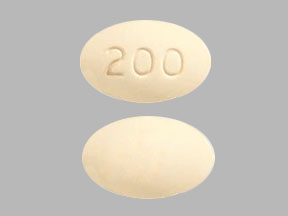Generic Stendra Availability
Last updated on Sep 10, 2025.
Stendra is a brand name of avanafil, approved by the FDA in the following formulation(s):
STENDRA (avanafil - tablet;oral)
-
Manufacturer: VIVUS LLC
Approval date: April 27, 2012
Strength(s): 50MG [RLD] [AB], 100MG [RLD] [AB], 200MG [RLD] [AB]
Is there a generic version of Stendra available?
A generic version of Stendra has been approved by the FDA. However, this does not mean that the product will necessarily be commercially available - possibly because of drug patents and/or drug exclusivity. The following products are equivalent to Stendra and have been approved by the FDA:
avanafil tablet;oral
-
Manufacturer: HETERO LABS LTD V
Approval date: June 14, 2024
Strength(s): 50MG [AB], 100MG [AB], 200MG [AB]
Note: Fraudulent online pharmacies may attempt to sell an illegal generic version of Stendra. These medications may be counterfeit and potentially unsafe. If you purchase medications online, be sure you are buying from a reputable and valid online pharmacy. Ask your health care provider for advice if you are unsure about the online purchase of any medication.
See also: Generic Drug FAQ.
Related patents
Patents are granted by the U.S. Patent and Trademark Office at any time during a drug's development and may include a wide range of claims.
-
Aromatic nitrogen-containing 6-membered cyclic compounds
Patent 6,656,935
Issued: December 2, 2003
Inventor(s): Yamada; Koichiro et al.
Assignee(s): Tanabe Seiyaku Co., Ltd. (Osaka, JP)An aromatic nitrogen-containing 6-membered cyclic compound of the formula (I): ##STR1##
wherein Ring A is a substituted or unsubstituted nitrogen-containing heterocyclic group; R.sup.1 is a substituted or unsubstituted lower alkyl group, --NH--Q--R.sup.3 (R.sup.3 is a substituted or unsubstituted nitrogen containing heterocyclic group, and Q is a lower alkylene group or a single bond), or --NH--R.sup.4 (R.sup.4 is a substituted or unsubstituted cycloalkyl group); R.sup.2 is a substituted or unsubstituted aryl group; one of Y and Z is .dbd.CH--, and the other is .dbd.N--, or a pharmaceutically acceptable salt thereof, these compounds exhibiting excellent selective PDE V inhibitory activities, and hence, being useful in the prophylaxis or treatment of penile erectile dysfunction, etc.Patent expiration dates:
- April 27, 2025✓✓✓
- April 27, 2025
Related exclusivities
Exclusivity is exclusive marketing rights granted by the FDA upon approval of a drug and can run concurrently with a patent or not. Exclusivity is a statutory provision and is granted to an NDA applicant if statutory requirements are met.
Exclusivity expiration dates:
- October 18, 2025 - REVISIONS TO THE LABELING TO ADD THE RESULTS OF A CLINICAL STUDY (TA-303) IN PATIENTS WITH ED FOLLOWING BILATERAL NERVE-SPARING RADICAL PROSTATECTOMY
More about Stendra (avanafil)
- Check interactions
- Compare alternatives
- Pricing & coupons
- Reviews (60)
- Drug images
- Side effects
- Dosage information
- During pregnancy
- FDA approval history
- Drug class: impotence agents
- En español
Patient resources
Professional resources
Related treatment guides
Related/similar drugs
Glossary
| Term | Definition |
|---|---|
| Drug Patent | A drug patent is assigned by the U.S. Patent and Trademark Office and assigns exclusive legal right to the patent holder to protect the proprietary chemical formulation. The patent assigns exclusive legal right to the inventor or patent holder, and may include entities such as the drug brand name, trademark, product dosage form, ingredient formulation, or manufacturing process A patent usually expires 20 years from the date of filing, but can be variable based on many factors, including development of new formulations of the original chemical, and patent infringement litigation. |
| Drug Exclusivity | Exclusivity is the sole marketing rights granted by the FDA to a manufacturer upon the approval of a drug and may run simultaneously with a patent. Exclusivity periods can run from 180 days to seven years depending upon the circumstance of the exclusivity grant. |
| RLD | A Reference Listed Drug (RLD) is an approved drug product to which new generic versions are compared to show that they are bioequivalent. A drug company seeking approval to market a generic equivalent must refer to the Reference Listed Drug in its Abbreviated New Drug Application (ANDA). By designating a single reference listed drug as the standard to which all generic versions must be shown to be bioequivalent, FDA hopes to avoid possible significant variations among generic drugs and their brand name counterpart. |
| AB | Products meeting necessary bioequivalence requirements. Multisource drug products listed under the same heading (e.g. identical active ingredients, dosage form, and routes of administration) and having the same strength (see Therapeutic Equivalence-Related Terms, Pharmaceutical Equivalents) generally will be coded AB if a study is submitted demonstrating bioequivalence. In certain instances, a number is added to the end of the AB code to make a three character code (e.g. AB1, AB2, AB7). Three-character codes are assigned only in situations when more than one reference listed drug of the same strength has been designated under the same heading. Two or more reference listed drugs are generally selected only when there are at least two potential reference drug products which are not bioequivalent to each other. If a study is submitted that demonstrates bioequivalence to a specific listed drug product, the generic product will be given the same three-character code as the reference listed drug it was compared against. |
Further information
Always consult your healthcare provider to ensure the information displayed on this page applies to your personal circumstances.

